W h i t b e c k N o t e s
Spring 2019

Keylimes and Fruit
12" x 16" oil on panel
Welcome to the Spring 2019 Whitbeck Notes
"Once the metropolis of Maryland", historic Saint Mary's City now brings to life the ways of a 17th century English colony of the early modern age, with its food, clothing, politics and society. 1634 was relatively late as far as European settlements on the east coast go, being quite a number of years past 1620 for Plymouth, 1626 for Nieuw Amsterdam and well past Jamestown's date of 1607. And what started out with plans of being Maryland's first capital was eventually succeeded by Annapolis further north, turning St. Mary's City into a kind of backwater.
Built along the banks of St. Mary's River, which empties into the Chesapeake Bay on the western shore, this beautiful spot was well situated for the beginnings of a colony. And after years of talking about a visit there, which never seemed would happen, my wife Gale and I finally decided to jump in the van and just make that trip! Plus, all was in good order with the studio, most paintings were just varnished or had just been finished and drying so a couple of days of down-time made for the perfect opportunity to make this happen.
Ranunculus Floral
20" x 16" oil on panel
We spent well of half the day wandering the pathways of the village, visiting various houses and getting into some great conversations with the costumed interpreters, who were top-notch, being well informed as well as being able to joke about a bit and make for a relaxed time. One of the buildings we visited was labeled on our guide map as "Cordea's Hope". It turns out that this was a storehouse for the French immigrant and prominent merchant, Mark Cordea who had had it built in the 1670's. Store house indeed! The archeologists of this site had unearthed fragments and various bits of pottery, glass, leather and metal and were able to, from piecing together and historical knowledge of the period, reconstruct what types of merchandise Cordea was selling. I was in Still Life heaven! One of the shelves had a number of reproductions of what are called Facon de Venise (in the style of Venice) drinking glasses, which anyone who has enjoyed 17th century Netherlandish still life would for sure have come across. Whether in the ever so delicate hold of a merry drinker and their companions or well placed amid other luxurious tableware and food, this ornately blown and formed glassware was the height of fashion.

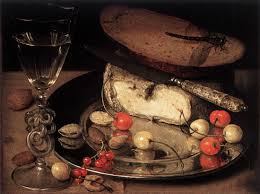
George Flegel
early 17th century
The form was usually a flute shaped body with an ornate spiraling, twisting serpent-like stem and foot. Only the more well-to-do settlers would have left Cordea's store house with one of these in hand.
Another of my finds was the great Bartmankrug, the bearded man jug! A fantastic beer jug made of clay and decorated on it's neck with a simplified image of a bearded face. Having purchased a fine reproduction of one of these from Westmore Pottery some years ago, I have often found a fitting spot for it in many of my paintings. It is stone, it is earthy, it smells of wonderful clay and it begs to be seen with beer, cheese and bread! A good, simple peasants meal. And because fragments of these Bartmankrug's were found here on site, they had a few sitting on the shelves and throughout the village.
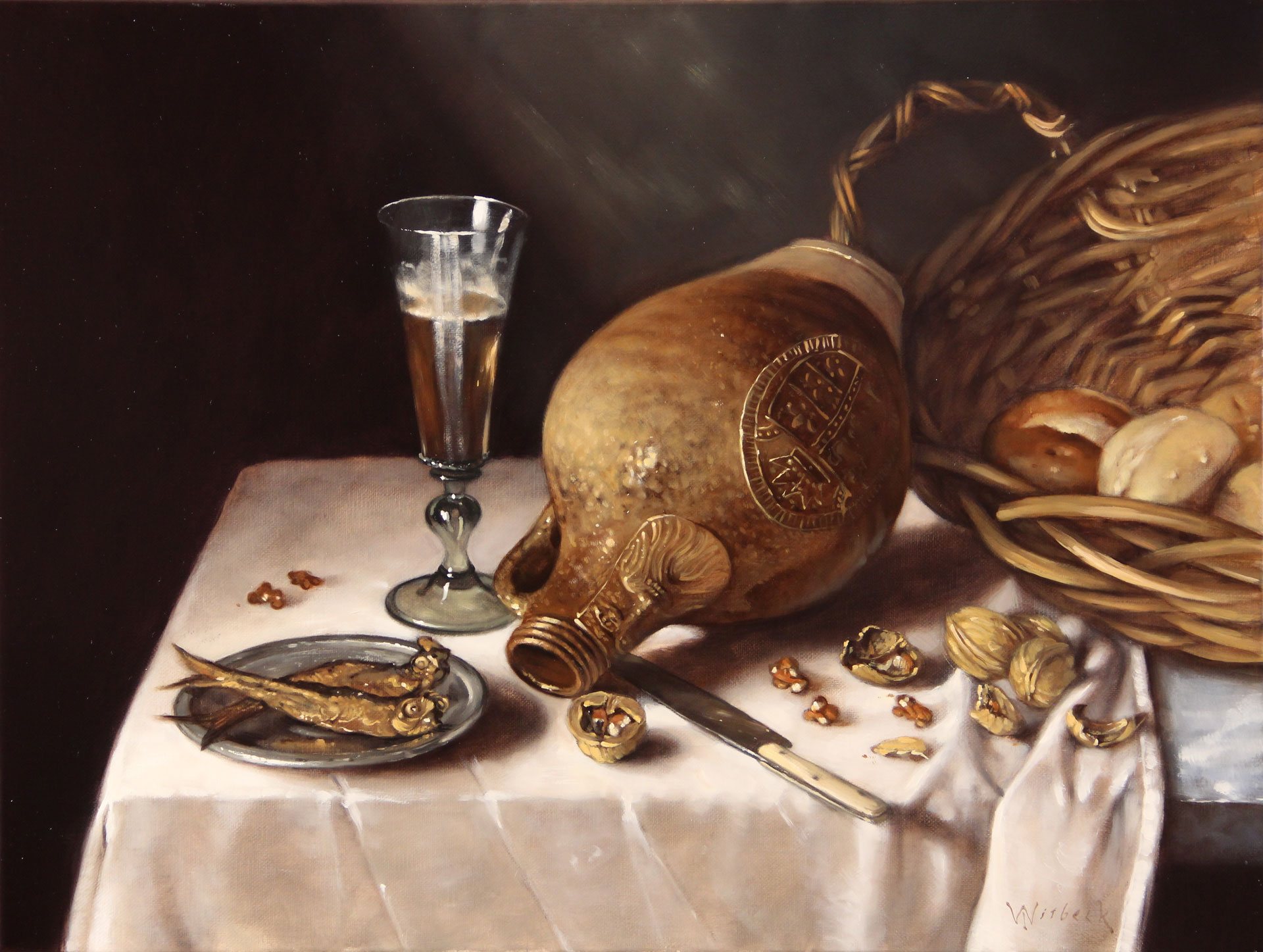
Herring and Beer
James Whitbeck
Mackerel
James Whitbeck
There were also the white clay pipes of the period and the "onion bottles" of green glass with their onion shaped bodies as well as the lovely Roemers with their raspberry prunts, all objects which I have often used in the lay-out for my painting's. So what a great sight it was to see all of these things in their natural setting, actually being used by people dressed in historically accurate clothing of the 17th century. For me, it presented yet another juicy facet to this period that I enjoy so much with it's history, art and people. Pottery and glassware that waits stationary in my studio as I capture it in oil on panel and canvas, here, in the village, holds water for a thirsty farmhand working in the tobacco fields, or adorns a well-off merchant's linen covered table at dinner time, or sits by the sooty fire place, gritty and real, holding chopped vegetables ready for the pot. I absolutely loved this vision of the past, and now look forward to getting back to the studio with a new eye for my favored object's.
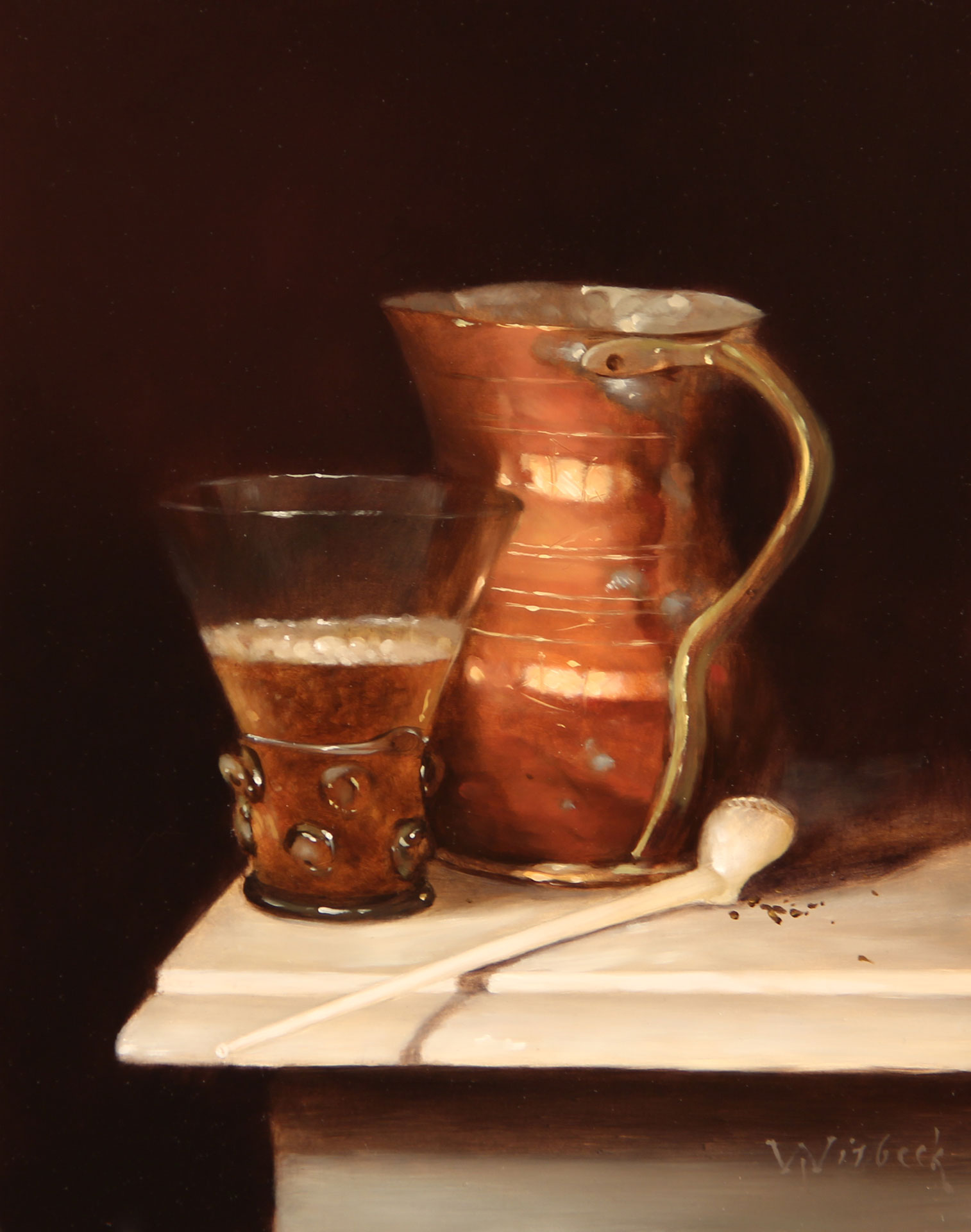


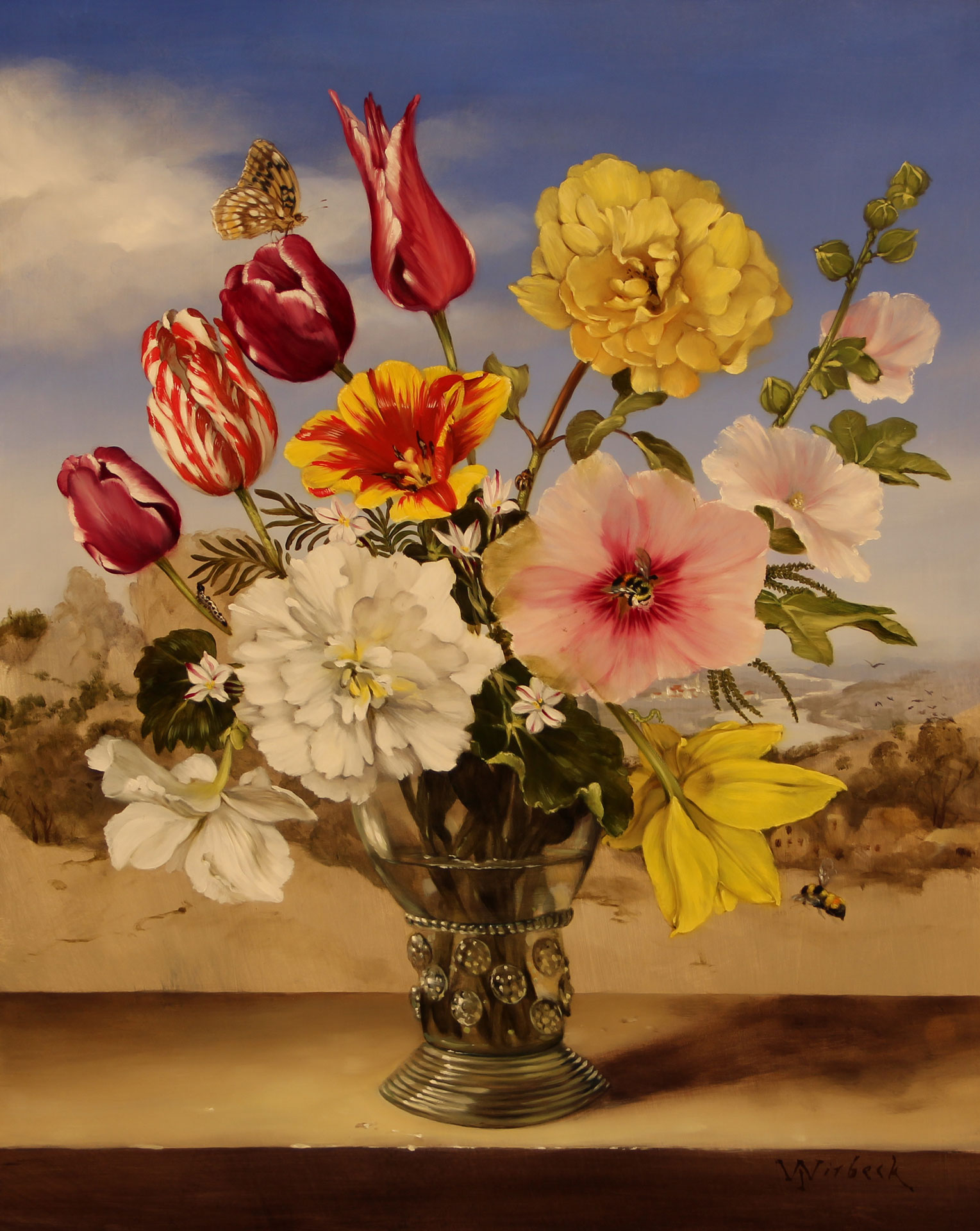
We couldn't help but add to our ever growing 17th century collection, and so purchased a couple drinking Jacks. These are a hard leather mug made for drinking beer, wine or water and which has a great solid shape and a rich brown color. Keep an eye out for one of these Jacks sitting nicely in one of my new still life pieces, and now know the story behind it, and know too that all the pieces in my paintings have stories and are more then just objects to make a good still life set-up.
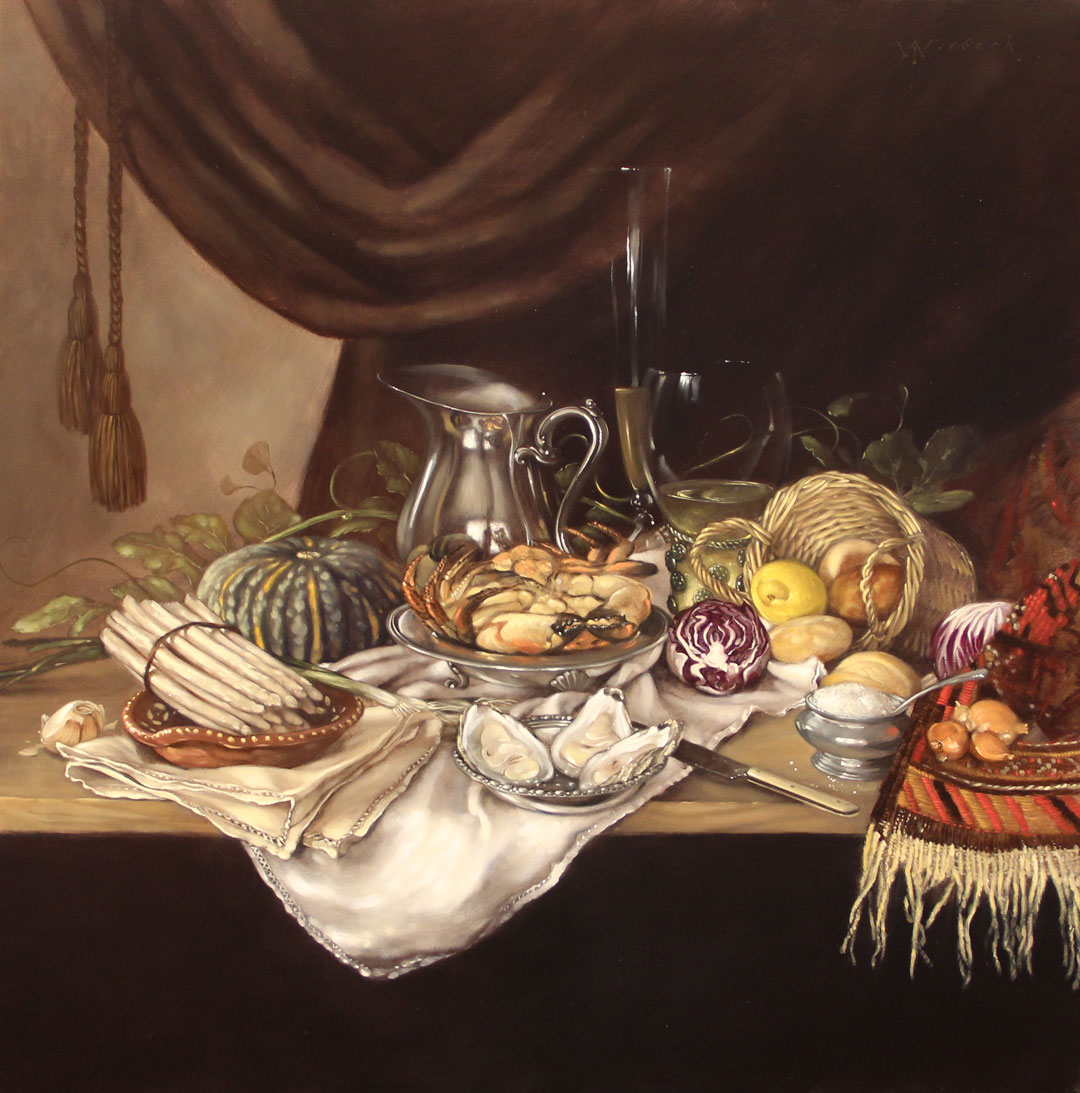
Crab Still Life
30" x 30" oil on canvas
For me, the show season is just around the corner. My two Chicago show's, 57th Street and Old Town start it all off, followed by Des Moines. I look forward to packing up the van and hitting the road, so keep an eye on the show schedule on my website www.jameswhitbeck.com to see all the updates as well as the latest paintings. It has been a great year in the studio, so many new paintings to be shown!
All my best, and happy Spring!
James Whitbeck
413-695-3937


De Hooch
James Whitbeck
Beauty of Kashan
James Whitbeck
Pipe and Beer
James Whitbeck
Mountain Bouquet
James Whitbeck